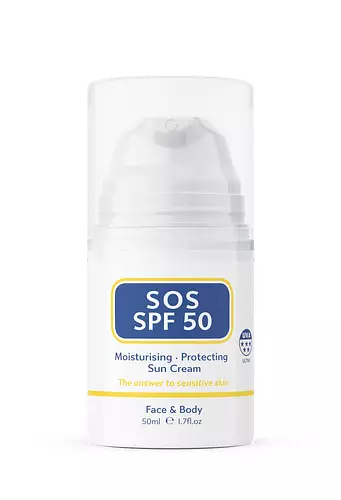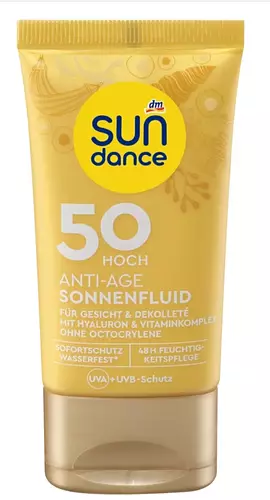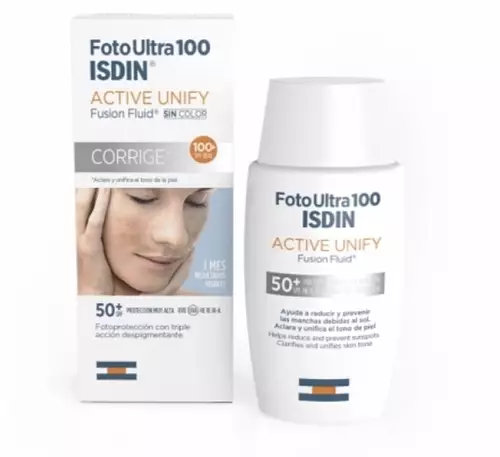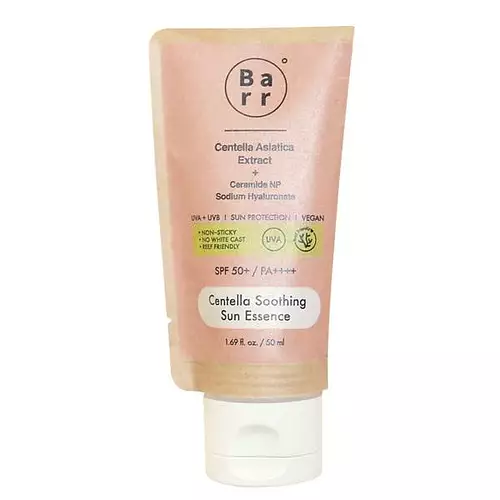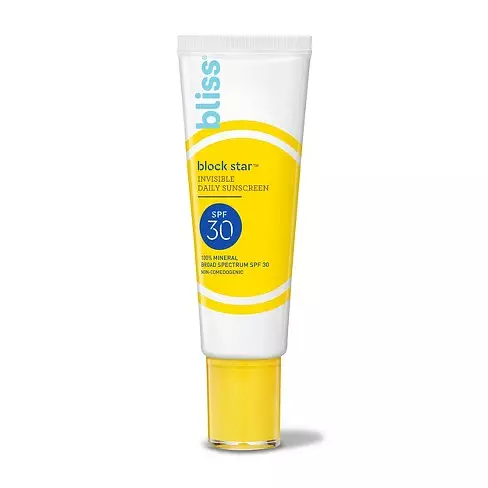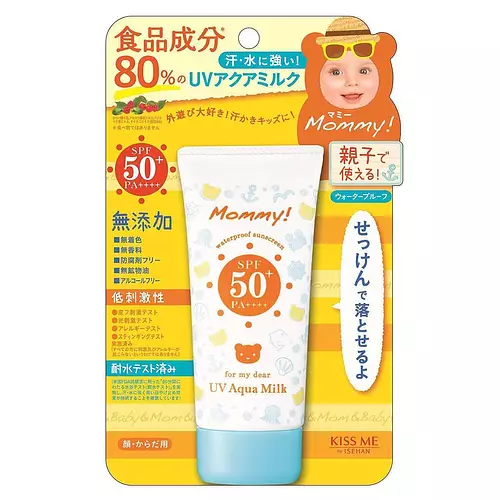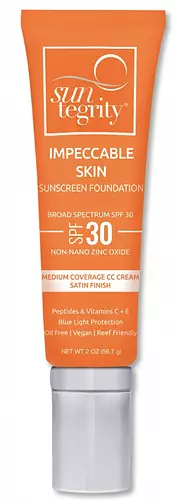ma:nyo Galactomy Sun Serum SPF 50+ PA++++ Versus SOS Serum SOS SPF 50
Updated on December 06, 2023
Overview
What they are
These products are both cruelty-free sunscreens. They have a total of 3 ingredients in common
Cool Features
They both contain hyaluronic acid and SPF
Suited For
They're both likely to be good for fighting acne, anti aging, dry skin, brightening skin, scar healing and better texture
Free From
They both do not contain any oils, parabens or sulfates
We independently verify ingredients, and our claims are backed by peer-reviewed research. Spot a product that needs an update? Let us know.
Ingredient Info
ma:nyo Galactomy Sun Serum SPF 50+ PA++++ 34 ingredients
SOS Serum SOS SPF 50 16 ingredients
At a glance
Click on any of the items below to learn more
ma:nyo Galactomy Sun Serum SPF 50+ PA++++ 34 ingredients
SOS Serum SOS SPF 50 16 ingredients
Notable Ingredients
This product contains 2 ingredients that may have this attribute:
This product contains 1 ingredient that may have this attribute:
This product contains 1 ingredient that may have this attribute:
This product contains 1 ingredient that may have this attribute:
This product contains 5 ingredients that may have this attribute:
Benefits
This product contains 3 ingredients that may have this attribute:
This product contains 1 ingredient that may have this attribute:
This product contains 2 ingredients that may have this attribute:
This product contains 1 ingredient that may have this attribute:
This product contains 1 ingredient that may have this attribute:
This product contains 1 ingredient that may have this attribute:
This product contains 3 ingredients that may have this attribute:
This product contains 1 ingredient that may have this attribute:
This product contains 1 ingredient that may have this attribute:
This product contains 1 ingredient that may have this attribute:
This product contains 3 ingredients that may have this attribute:
Concerns
This product contains 1 ingredient that may have this attribute:
Notable Ingredients
This product contains 4 ingredients that may have this attribute:
This product contains 2 ingredients that may have this attribute:
This product contains 1 ingredient that may have this attribute:
This product contains 1 ingredient that may have this attribute:
Benefits
This product contains 1 ingredient that may have this attribute:
This product contains 1 ingredient that may have this attribute:
This product contains 1 ingredient that may have this attribute:
This product contains 1 ingredient that may have this attribute:
This product contains 1 ingredient that may have this attribute:
This product contains 3 ingredients that may have this attribute:
Concerns
This product contains 2 ingredients that may have this attribute:
This product contains 3 ingredients that may have this attribute:
This product contains 1 ingredient that may have this attribute:
Ingredients Side-by-side
Ingredients Explained
These ingredients are found in both products.
Ingredients higher up in an ingredient list are typically present in a larger amount.
Water. It's the most common cosmetic ingredient of all. You'll usually see it at the top of ingredient lists, meaning that it makes up the largest part of the product.
So why is it so popular? Water most often acts as a solvent - this means that it helps dissolve other ingredients into the formulation.
You'll also recognize water as that liquid we all need to stay alive. If you see this, drink a glass of water. Stay hydrated!
Learn more about WaterGlycerin is already naturally found in your skin. It helps moisturize and protect your skin.
A study from 2016 found glycerin to be more effective as a humectant than AHAs and hyaluronic acid.
As a humectant, it helps the skin stay hydrated by pulling moisture to your skin. The low molecular weight of glycerin allows it to pull moisture into the deeper layers of your skin.
Hydrated skin improves your skin barrier; Your skin barrier helps protect against irritants and bacteria.
Glycerin has also been found to have antimicrobial and antiviral properties. Due to these properties, glycerin is often used in wound and burn treatments.
In cosmetics, glycerin is usually derived from plants such as soybean or palm. However, it can also be sourced from animals, such as tallow or animal fat.
This ingredient is organic, colorless, odorless, and non-toxic.
Glycerin is the name for this ingredient in American English. British English uses Glycerol/Glycerine.
Learn more about GlycerinHyaluronic acid is naturally found in healthy skin. It is a humectant, meaning it draws moisture to your skin.
This ingredient helps hydrate, soothe, and protect the skin.
What makes hyaluronic acid so hydrating? It has the capacity to bind or hold large amounts of water.
Fun fact: It is already naturally found in our bodies, such as the fluids of our eyes and our joints.
Studies find this ingredient to have anti-inflammatory and anti-microbial properties. This can help speed up wound-healing,
These are some other common types of Hyaluronic Acid:
Learn more about Hyaluronic AcidIngredient Ratings
Here's what our community thinks of the ingredients in these products.
When to use
ma:nyo Galactomy Sun Serum SPF 50+ PA++++ 34 ingredients
SOS Serum SOS SPF 50 16 ingredients

Reviews
Here's what our community thinks
ma:nyo Galactomy Sun Serum SPF 50+ PA++++ 34 ingredients
channelorange
This is my all time favorite sunscreen with absolutely no flaws, but ma:nyo decided to reformulate this masterpiece, change the name and add...
This is my all time favorite sunscreen with absolutely no flaws, but ma:nyo decided to reformulate this masterpiece, change the name and add alcohol, get rid of the added collagen and centella and made it absolutely worse. It blended perfectly into the skin, had no fragrance or sunscreen smell, left a dewy yet not greasy and you could put tons of layers of this sunscreen on ur face and it wouldn't peel - absolutely gorgeous!!
nesgarciap
Amazing SPF serum
This Korean chemical PA++++ 50+ SPF serum is amazing. It has no harmful ingredients, it’s extremely lightweight (almost like...
Amazing SPF serum
This Korean chemical PA++++ 50+ SPF serum is amazing. It has no harmful ingredients, it’s extremely lightweight (almost like water), it’s not greasy whatsoever, it doesn’t leave a white cast, it’s not waterproof but it doesn’t sting the eyes and it’s so cheap! ✨🤯☀️🔬🪔💰🇰🇷

